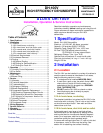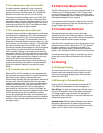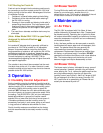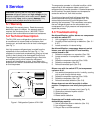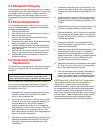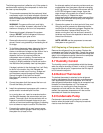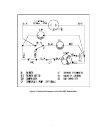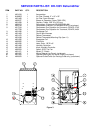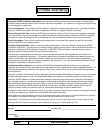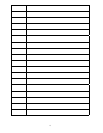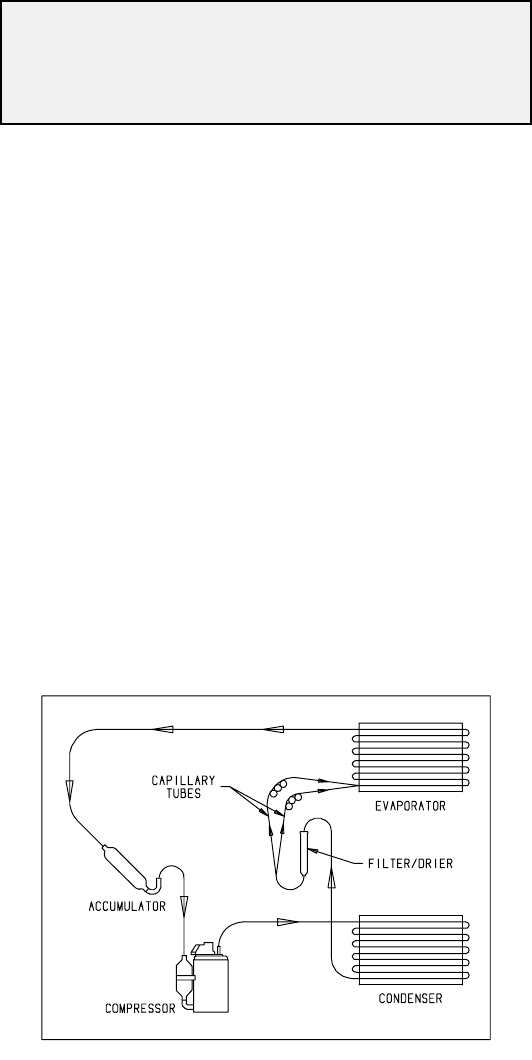
5 Service
CAUTION: Servicing the DH-100V with its high-
pressure refrigerant system and high voltage circuitry
presents a health hazard, which could result in death,
serious bodily injury, and/or property damage. Only
qualified service people should service this unit.
5.1 Warranty
See page 9 for warranty terms. Read the warranty
before any repair is initiated. If a warranty repair is
required, call the factory first at 1-800-255-7749 for
warranty claim authorization and technical assistance.
5.2 Technical Description
The DH-100V uses a refrigeration system similar to an
air conditioner's to remove heat and moisture from
incoming air, and add heat to the air that is discharged
(see Fig. 1).
Hot, high-pressure refrigerant gas is routed from the
compressor to the condenser coil (see Fig. 1). The
refrigerant is cooled and condensed by giving up its heat
to the air that is about to be discharged from the unit.
The refrigerant liquid then passes through a filter/drier
and capillary tubing, which cause the refrigerant
pressure and temperature to drop. It next enters the
evaporator coil where it absorbs heat from the incoming
air and evaporates.
Figure 1: Refrigeration System of DH-100V
The evaporator operates in a flooded condition, which
means that all the evaporator tubes contain liquid
refrigerant during normal operation. A flooded evaporator
should maintain constant pressure and temperature
across the entire coil, from inlet to outlet.
The mixture of gas and liquid refrigerant enter the
accumulator after leaving the evaporator coil. The
accumulator prevents any liquid refrigerant from
reaching the compressor. The compressor evacuates
the cool refrigerant gas from the accumulator and
compresses it to a high pressure and temperature to
repeat the process.
5.3 Troubleshooting
No dehumidification, neither blower nor compressor
run with fan switch OFF.
1. Unit unplugged or no power to outlet.
2. Humidity control set too high or defective (Sec. 3.1
& 5.7).
3. Loose connection in internal wiring.
No dehumidification, compressor does not run but
blower runs with fan switch OFF and humidity
control turned to ON.
1. Defective compressor run capacitor (Sec. 5.6).
2. Loose connection in compressor circuit (see
Fig. 2).
3. Defective compressor overload (Sec. 5.6A).
4. Defective compressor (Sec.5.6).
5. Defrost thermostat open (Sec. 5.8).
Blower runs with fan switch OFF, but compressor
cycles on & off.
1. Low ambient temperature and/or humidity, causing
unit to cycle through defrost mode.
2. Defective compressor overload (Sec. 5.6A).
3. Defective compressor (Sec. 5.6).
4. Defrost thermostat defective (Sec. 5.8).
Blower does not run with fan switch in either
position. Compressor runs briefly but cycles on &
off.
1. Loose connection in blower circuit (see Fig. 2).
2. Obstruction prevents impeller rotation.
3. Defective blower.
4. Blower switch defective.
Evaporator coil frosted continuously, low
dehumidifying capacity.
1.
Defrost thermostat loose or defective (Sec. 5.8).
2. Low refrigerant charge
3. Dirty air filter or airflow restricted.
4



